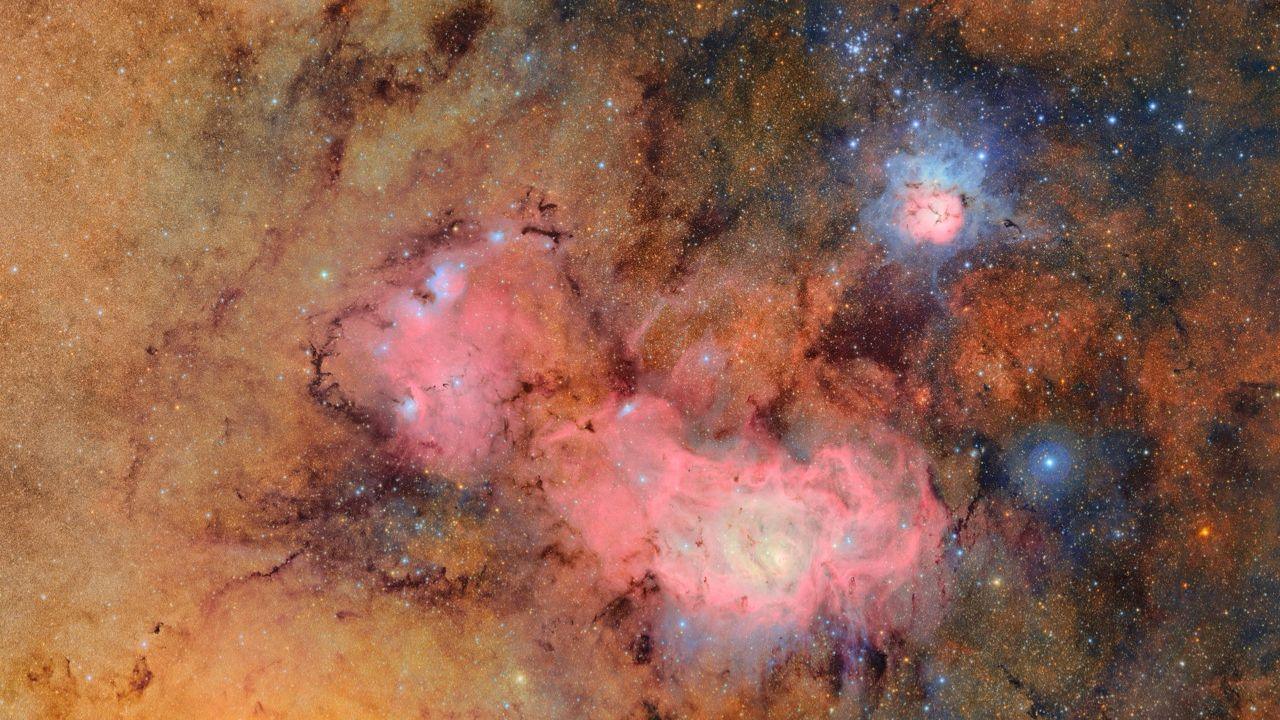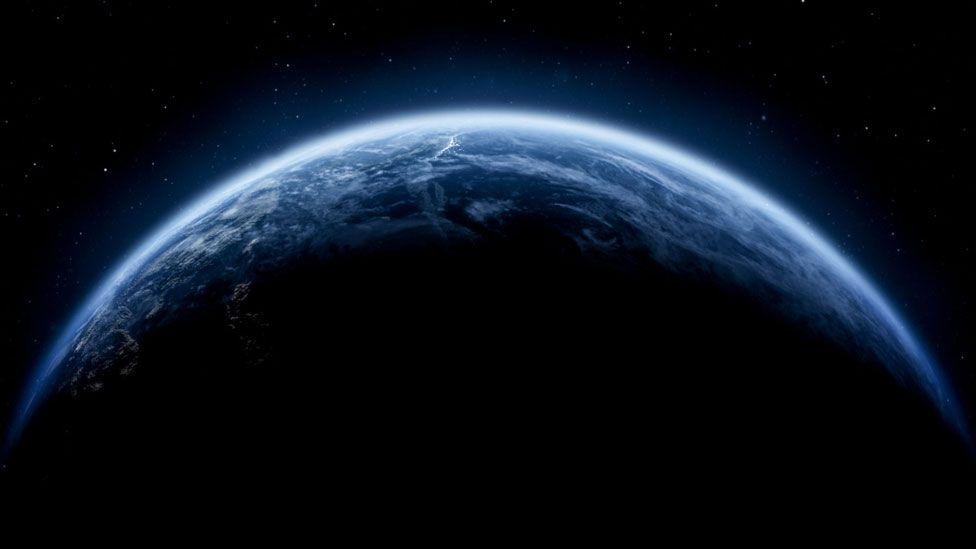Could a paint stop 'motorway of satellites' in sky?
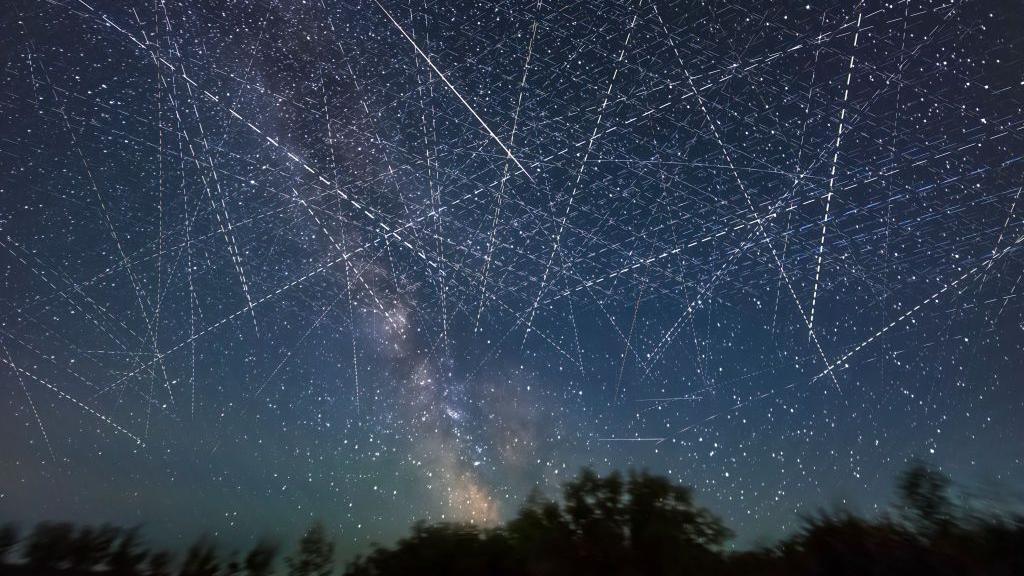
Light reflecting from satellites can be seen from Earth
- Published
Scientists are testing a black paint they hope will stop the night sky turning in to a "motorway of satellites".
Noelia Noel, an astrophysicist at the University of Surrey, is working with a team carrying out tests on Vantablack 310, a black paint developed by Surrey NanoSystems which can be applied to satellites.
She said light reflecting from the devices was obstructing astronomical ground-based telescopes and "ruining" images for research, including at the Vera C Rubin observatory in Chile.
"What I am proposing is to minimise the impact, to make space more sustainable, to mitigate the light pollution from these satellites," Dr Noel told BBC Surrey.
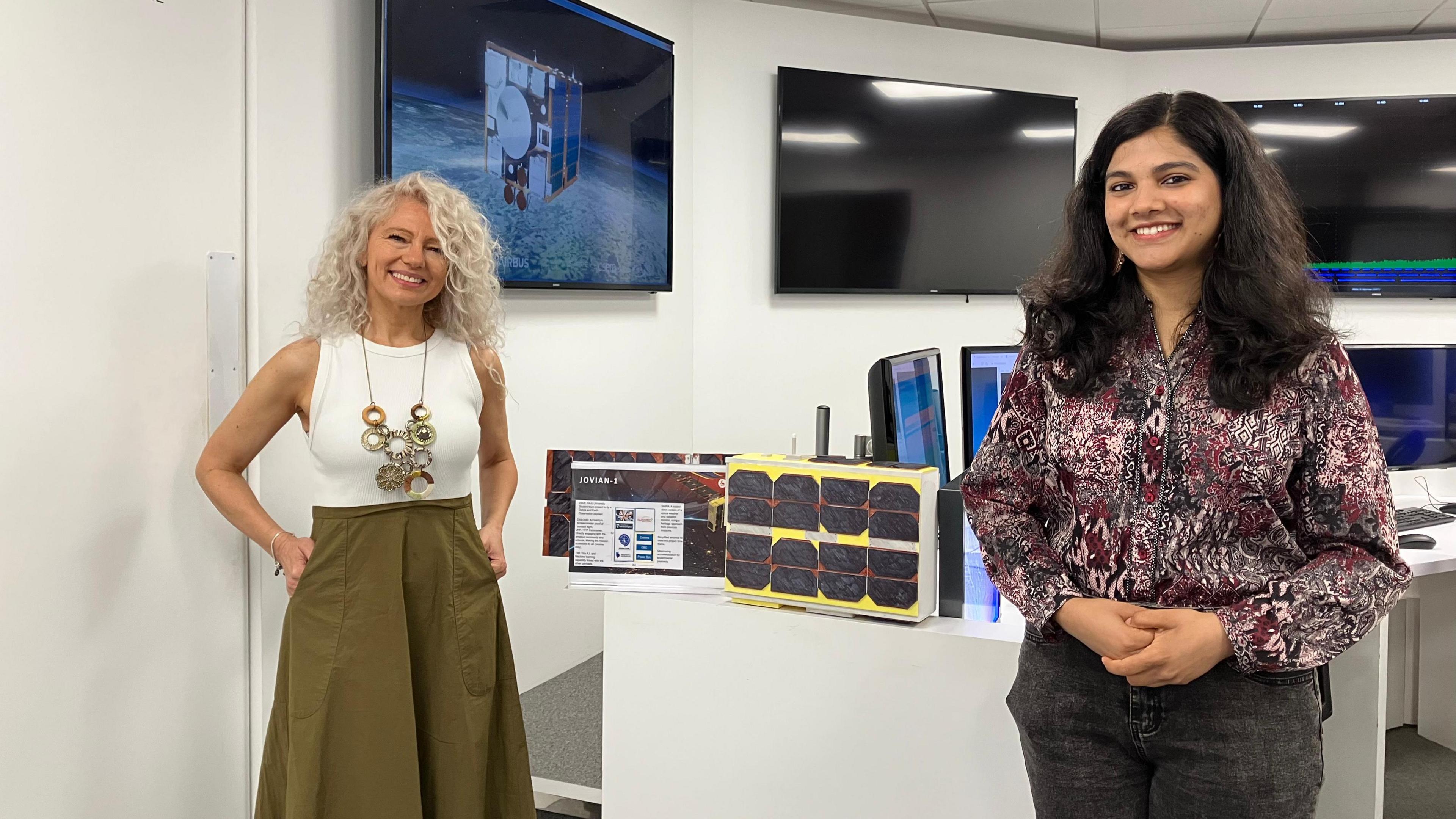
Noelia Noel (left) and Astha Chaturvedi with a model of the satellite planned for launch in 2026
"This is about cultural heritage," she said. "Imagine you go to a museum and you see a Van Gogh or a lovely Rembrandt and someone comes and scribbles on it with a highlighter.
"We are doing graffiti on a masterpiece."
The number of satellites in the low earth orbit is increasing exponentially, Dr Noel says, adding that they play important roles, including providing GPS and helping us understand and monitor climate change.
A UK Space Agency spokesperson said there were about 12,000 satellites in Earth's orbit, with the number expected to rise to 60,000 by 2030 - some experts predict even larger numbers.
For example, Starlink, a SpaceX subsidiary, uses a growing network of satellites to connect remote areas to fast internet, with previous UK figures showing it could deliver internet speeds four times faster than the average.
Astha Chaturvedi, a 25-year-old PhD student who is testing Vantablack 310, said: "It would be really great if Starlink could use this paint.
"Not only to protect our skies but also give a message to other satellite operators and encourage them to paint their satellites black."
SpaceX did not send a statement in relation to a request from the BBC but did point to previous work done with astronomers to protect the night sky.
Earlier dark coatings on satellites had led to thermal issues and some electronic components overheating.
In 2020 SpaceX said in a public update that it was "committed to making future satellite designs as dark as possible".

Vantablack 310 was developed by Surrey NanoSystems
Ms Chaturvedi compared the satellites to causing "fingerprints" on the "window to the universe".
"The cosmos is humanity's window to the universe, poets have been inspired by it, it has inspired a lot of discussions that have led to the technologies which make our life easier right now," she said.
Vantablack 310 will be trialled on Jovian 1, a shoebox-sized satellite due to launch in 2026.
Meredith Rawls, a research scientist at Vera Rubin, said "many complementary mitigation strategies" were necessary to reduce the impact of satellite streaks on images captured by the telescope.
She said while a substantial fraction of Rubin's images would have a satellite streak, most were not "ruinous", adding: "Despite the increase in satellite streaks, Rubin will still do amazing science."
Ongoing work includes developing tools to help identify satellites, avoiding the brightest satellites and tools to help scientists understand when contamination was likely.
"The specific science impacts depend strongly on the satellite population, which is impossible to predict," she said.
"However, they will certainly be a nuisance we need to mitigate - akin to 'bugs on the windshield'."
A spokesperson for the UK Space Agency said it promotes the sustainable use of space through a wide range of initiatives.
"We collaborate to develop standards, regulations, norms of behaviour, agreements and best practices that influence and define the in-orbit regime of the future across the globe," they added.
Follow BBC Surrey on Facebook, external, on X, external, and on Instagram, external. Send your story ideas to southeasttoday@bbc.co.uk, external or WhatsApp us on 08081 002250.
Related topics
- Published2 August 2022
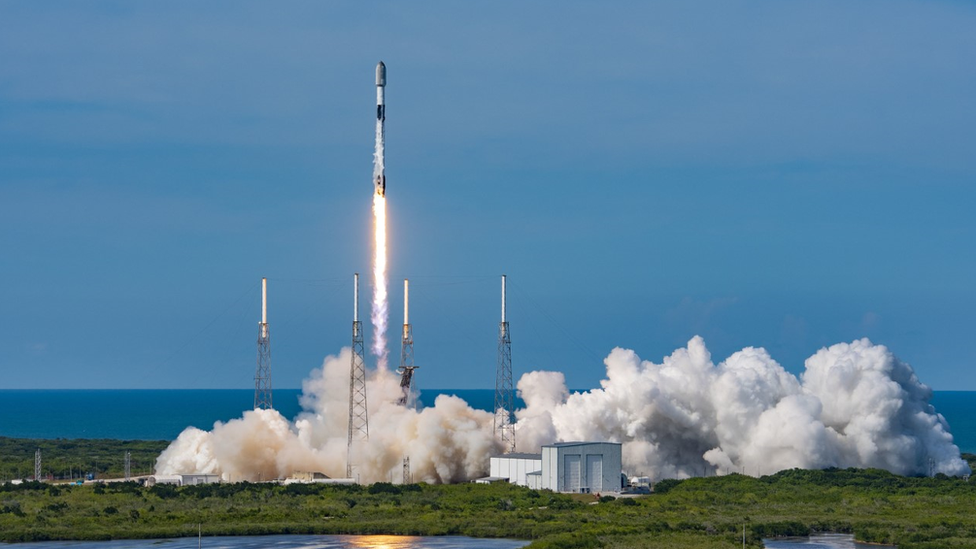
- Published25 September 2024
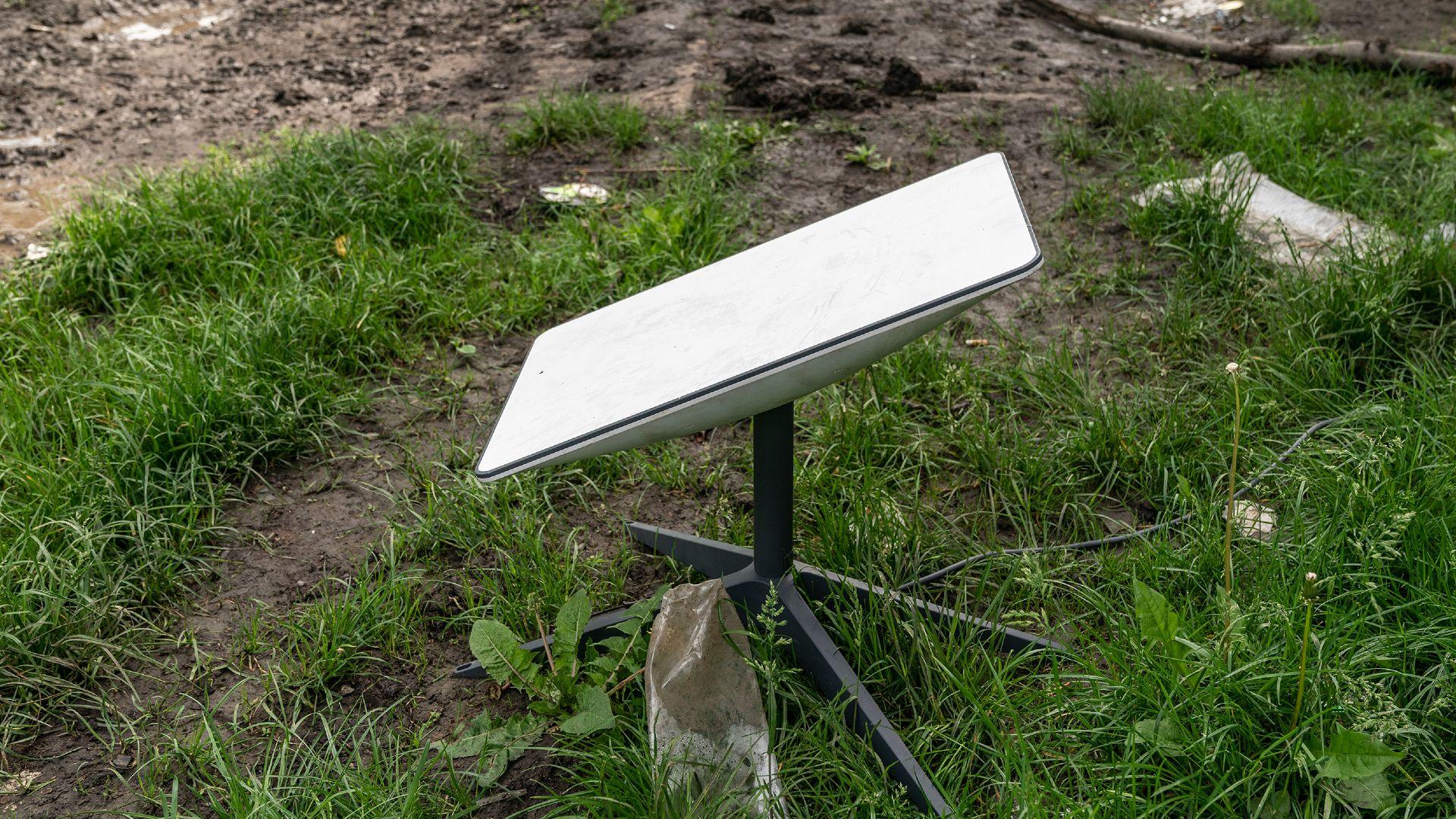
- Published23 June
